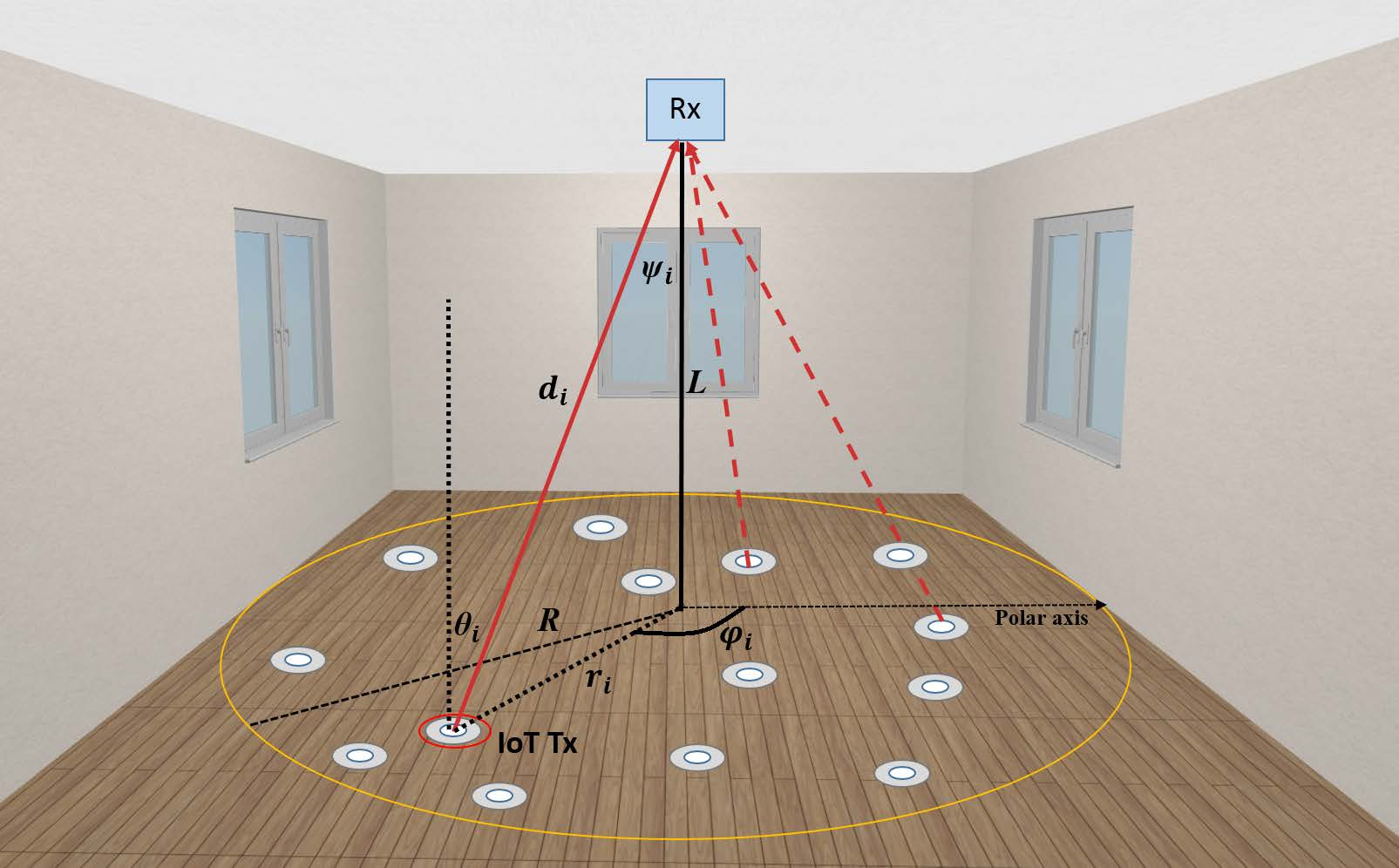In this article, we consider a random access scheme for an indoor Internet of Things (IoT) framework that uses optical wireless communication (OWC). We focus on a Slotted ALOHA (SA)-based solution where a number of OWC IoT users contend to send data to a central OWC receiver. In any given slot, and for a randomly selected active user, we consider the reliability of decoding the user's data packet at the receiver. This is done by deriving the signal-to-noise-and-interference-ratio (SINR) statistics from a randomly chosen user and evaluating the probability that the user's SINR is below a given threshold. By placing our analysis in the context of an indoor OWC IoT uplink setup, and employing the standard OWC channel model, we investigate the trade-offs between the reliability and the OWC system parameters such as the cell area or the transmitter's semi-angle. We obtain valuable insights into the design of an SA-based random access solution for a typical indoor OWC cell.
翻译:在本文中,我们考虑的是使用光学无线通信的室内物联网框架的随机访问计划。我们侧重于基于无线通信的基于空格的ASLOHA(SA)解决方案,即一些OWC IOT用户试图将数据发送到中央 OWC接收器。在任何给定的时段,对于随机选择的积极用户,我们考虑在接收器中解码用户数据包的可靠性。这是通过从随机选择的用户中得出信号到噪音和干扰(SINR)的统计数据来完成的。我们通过将我们的分析置于内部 OWC IoT连接设置的背景中,并使用标准 OWC 频道模型,我们调查了可靠性与OWC系统参数(如细胞区域或发射器的半轴)之间的取舍。我们从一个基于SA的随机访问解决方案的设计中获得了宝贵的见解。





